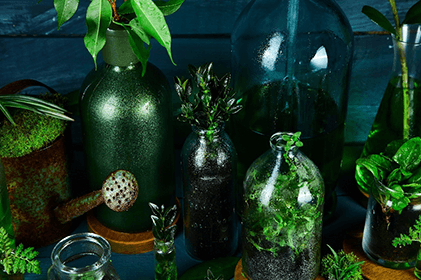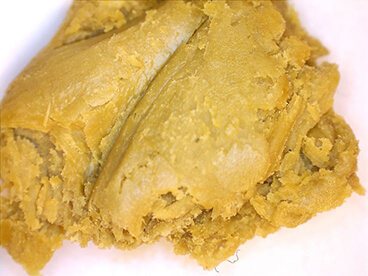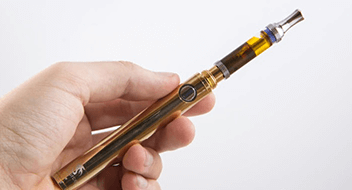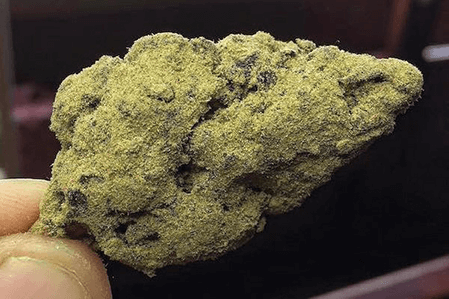Chances are, if you’ve flown high, maneuvering to and fro, by passing each elusive ball of cloudy mist all at the comfy space of your couch – you’ve tried cannabis concentrates.
And chances are, if you’ve never heard of cannabis concentrates, you’ve been flying high, way high – on a bright red swing at your local playground.
Well, figuratively.
So, to better help you navigate towards higher ground, we’ve detailed a complete guide to what cannabis concentrates are, along with how they are best used, using 11 different examples.
Here is what we’ll break down in successive order:
Table of Contents
- What are Cannabis Concentrates?
- How are Cannabis Concentrates Made? Solvent and Solvent-free
- Solvent Concentrates Beginning
- Shatter
- Hash Oil
- Sugar Wax
- Budder
- Crumble
- Live Resin
- Co2 Oil
- Solvent-free Concentrates Beginning
- Kief
- Hash
- Moon Rocks
- Rosin
So, whether you’re an amateur, seasoned vet or somewhere in-between, buckle up! As we take flight, Herb Approach style.
What are Cannabis Concentrates?

When it comes to experiencing cannabis’ mind-altering effects – the all-victorious, almighty molecule THC is king.
And when it comes to the flavor, smell and aromatic properties of your fav cannabis strains – the stinkiest, stenchiest yet tastiest groups of molecules, terpenoids and flavanoids, wins the prize.
Move to the side CBD, this article isn’t about you.
Because for those who are in strictly go-to euphoric mode, THC and terpene molecules are highly sought after, both in the clinical cognitive-testing and less formal munch-snacking environments.
So naturally, its led a wave of cannabis fanatics in discovering method after method of how these feel-good, smell-good and taste-good molecules can be best isolated from their natural plant setting.
Ultimately, making THC and terpenes accessible into even more refined and less-convoluted forms.
Heard of hashish? Butter? Oil? Tinctures even?
Well, these, along with many others as we’ll soon discuss, are what cannabis concentrates are, which as the name suggests, all have concentrated THC and terpene levels to some varying degree, ranging from as high as 60% to as reality-bending as 90%.
Flying high is no joke indeed.
Compare that with the average strain’s THC content of 15%, and flying high becomes a potentially debilitating experience, which is why we’re to inform.
But, before we get into the different types of cannabis extracts and the precautions of how they’re best used, digging a little deeper into what THC and terpenes are and how they’re extracted is next.
How are Cannabis Concentrates Extracted?

As with most things valuable, either physical, chemical or whatever, our human tendency seems to always be: refine, refine, purify and purify.
That is, if it suits a worthy purpose.
Our society is filled with examples – from precious metals like copper and lithium, to various pharmaceuticals and psychedelic substances like DMT.
And with THC and terpene molecules, the key ingredients for cannabis concentrates, it’s no different.
Both molecules are conveniently produced in the same areas of dry cannabis plants, specifically on its flower buds and leaves, making up the plant’s sticky glands and sparkly white hairs.
These sticky, icky glands and silvery white hairs are known collectively in scientific lingo as trichomes, or more casually as resin and bud crystals.
Interestingly, THC and terpenes aren’t the only molecules formed within trichomes, as over a hundred other cannabinoids, the molecule category THC falls under, exist alongside them, with the most prevalent being CBD, CBG and CBN.
The royal family of cannabinoids if you will.
There’s also an interesting backstory how these cannabinoids change, from the onset of plant birth to the moments they’re inhaled and reacting with our biology, making us feel ever so relaxed and light on our feet.
More information can be found in the article “THCA: A Medical Breakthrough?”.
So, whether you’re an amateur cannabis scientist or academically decorated chemist, the challenge then becomes:
what are the best ways in making cannabis concentrates?
That is, how are THC and terpene molecules best isolated from their dry cannabis plants?
Learning where to start can be a tricky, tricky process, given there’s a whole host of different techniques. Fortunately for us, they all fit nicely into two categories:
- Solvent methods:

These methods use chemical solvents to separate THC and terpenes from cannabis plants. Some solvents are highly flammable and a lot more toxic than others. They include: isopropyl alcohol, acetone, butane, propane and more.
2. Solvent-free methods:

These methods don’t use chemical solvents in separating THC and terpenes from their dry bud setting – some techniques include the use of cold water, high temperatures, gravity or the rubbing and mixture of other plants.
Adding to the complexity, each category, along with its smaller sub-categories creates different kinds of cannabis concentrates. The next part will dive deeper into just that – by discussing what types of cannabis concentrates are available and how to use them responsibly.
Let’s start with concentrates made from solvents.
Solvent Cannabis Concentrates
Shatter

Shatter holds the top spot on our list not by coincidence, but based on merit, in terms of potency. In fact, Shatter is so potent, that it’s easily one of the highest THC concentrates on our list, reaching levels close to 90%.
However, it fails to reach THC champion-level-status among concentrates, being second to the one and only THC distillates.
For now, however, you can ask any shatter advocate, and they’d tell you second place is more than enough, even if there is a trade-off.
Hmmm, what trade off you might ask?
Well, you see, shatter achieves its high THC purity through an additional filtration process that removes its flavorful terpene molecules, therefore, giving it a relatively bland smell and taste experience.
But, don’t get the wrong idea, shatter still holds some trademark cannabis flavour.
In terms of initial steps, petroleum-based chemicals like propane and butane are commonly used to separate the highly sought after trichomes to make shatter, further turning them into a brown gooey caramel-like substance, which when cooled, becomes shatter’s infamous glass-like texture.
As you’ll find out below, these initial steps can also be used for several other concentrates. Emphasis on the word can, as there are several methods that are arguably a lot more efficient.
And, just like with other concentrates, as you’ll soon see, shatter is best used through vape pens and rigs.
More detailed information about shatter, how to make shatter and its uses, can be found here –
Related Story: What is Shatter, How to Smoke it and More
Hash Oil

Remember that brown gooey molten caramel-like substance that’s involved while making shatter?
Well, that’s hash oil, or more accurately when butane is used, “butane hash oil” – just one of the many types.
Liquid, runny and gooey in texture, hash oil is multifaceted in its use, ranging from being a thick topical sauce for your salads, to being packed into cartridges for vape pens, to just being eaten out right.
Sidenote:
Beware, ingesting oil is a lot more psychoactive then inhaling, so measure your doses accordingly.
End of Sidenote.
Along with being flexible in its use, hash oil is also the beginning ingredient for other cannabis concentrates like the above shatter and the below crumble, sugar wax and budder – not to mention a few others that didn’t make the list.
The differences for these 4 concentrates are also very slight, mostly being in texture and in the level of terpene molecules, as we’ll soon see.
Interesting isn’t it?
Moving forward.
In terms of how hash oil is made, there are numerous ways. Here’s a breakdown:
- With Co2 technology, which will be discussed below
- With revolutionary Rosin technology, again, will be discussed below.
- With butane, resulting in butane hash oil (BHO), which was already discussed.
- With Isopropyl alcohol – discussion begins here 😊.
Alcohol made hash oil or “quick wash hash”, differs from the rest, in that, its extraction process solely uses isopropyl alcohol.

This method is usually touted for its simplicity and DIY convenience, but like with any harmful solvent, poses similar residue risks. More info can be found in later articles.
Fun Concentrate Fact:
Regardless of how hash oil is made and whatever texture its final form is in, concentrates made from oil are referred to as dabs, as in –
“Hey George!”
“Care for a prune salad?”
“Nah, I’ll just take a dab”
Sugar Wax

Following the trend of solvent-based concentrates, is sugar wax, the cannabis extract that’s preferred for its flavorful characteristics.
Since terpene molecules are responsible for creating cannabis’s aromatic, taste-bud worthy properties, you’d guess right if sugar wax is high in both THC and, especially, terpene content.
Along with this, sugar wax is best used in the same vaping or rigging ways as other oil-based cannabis concentrates and holds the same precautions when embarking on a DIY venture.
Budder

Budder falls right smack in the middle, texture wise, just in-between the glass-like shatter and the runny, gooey hash oil.
Budder’s form is moist and close to sauce in texture, a lot like sugar wax, and is best smoked through conventional ways, like pipes, bongs, or even sprinkled lightly on specially rolled blunts.
The choice is yours! How liberating it is.
But again, budder should not be extracted at home, given that your most likely going to use the highly flammable butane or propane.
Sidenote:
Well, using butane or propane maybe not as likely, as you’ll soon find out below.
End of Sidenote
Also, shatter holds THC champion-like status because of its filtrated terpene molecules, thus, making both Sugar Wax and Budder stand out for its nose and taste appeal.
Our next concentrate, crumble, also stands out for these reasons.
Crumble

If the cannabis extract breaks down in your hand like dry cheese, yet is smooth, moist and creamy to the touch, Crumble is its name.
And, just like its hash oil derived relatives, it’s smoked or ingested in similar ways, but unlike the rest of its family, crumble’s texture is made through an extra heated step in the filtration process, which gives it its distinct texture – call this step “the purge.”
Interesting isn’t it? More can be found in later articles, so, look out.
Live Resin

Live resin just might be the crème de la crème of concentrates.
Coming on to the scene via a group of Colorado-based growing fanatics, live resin is known to be highly, highly THC and terpene filled, not to mention just as shape-shifty as hash oil.
In fact, some easily mistake it for hash oil, until that is, they witness how it’s extracted.
In a nutshell – live resin is made in at least negative 30 degrees Celsius environments, using frozen butane oil to remove trichomes and terpenes from not only just as frozen cannabis plants, but uncured frozen cannabis plants.
I’d read that sentence again.
Heavy, right?
This process alone provides a hint why live resin far surpasses its concentrate relatives in terms of terpene content, without sacrificing on THC levels.
So high in both molecules and malleable to any texture – from being shatter-like to lubricating oil – that it’s highly likely the most expensive concentrate on our list, not to mention on the menus of most dispensaries.
Important to keep in mind, next time you’re concentrate shopping.
And for DIY practitioners, dream on, because live resin’s process goes well beyond any capabilities that your refrigerator has, plus, it also requires the potentially explosive butane.
Well, for now that is.
Co2 Oil

If you’re not aware, Co2 is carbon dioxide – the inflammable, naturally producing, safe inhaling solvent.
Sustainable indeed.
So, when it’s used to extract THC and terpene molecules from dry cannabis plants, isolating them into a liquid, lubricating substance, it should be a breakthrough – a remarkable one.
But no, not really.
Because as of this writing, critical Co2 lab equipment is outright expensive, ranging in the hundreds of thousands of dollars, and not surprisingly, it needs to be used by highly trained professionals – an extra cost not to be taken lightly.
Talk about a loss for sustainability.
But, not so fast.
As we start moving down the list, with non-solvent made concentrates, sustainability is more than alive and well – rather, its thriving.
Solvent-free Cannabis Concentrates
Kief

Alert, alert DIY mad cannabis extract scientists!
The first, and original cannabis concentrate, kief, can give you roughly 50% more THC than when smoking dry cannabis plants as they are – and all you need is a three-chamber grinder.
Good news, isn’t it?
I mean, aside from the 1950’s marketing tone, hell yeah it is.
Because, all that laborious hand-twisting, turning and pressing grinder-action turns into an extremely rewarding experience.
You see, all that bottom resin and crystals left over in your grinder – that’s kief, well actually, it’s kief and some plant matter.
More precisely, what kief is, is one very much important yet sticky, icky piece to trichomes, that being, the silvery hairs or bud crystals piece.
Kief is also known as pollen or dry sift on other plants, responsible for repelling and attracting mother nature’s other less-smokable critters.
And, it’s best used as a sprinkled enhancer for your smoking experience, whether its serenaded on a joint, bowl, or even a cigarette. However, that’s not it.
Since, it’s the oldest, wisest concentrate, kief forms the basis for creating other concentrates like Hashish and Moonrocks.
Sidenote:
Kief that’s more off-white in color is higher in purity, while the greener, the more plant matter is mixed in, thus having less purity.
End of sidenote.
Hashish
Hashish, or just hash, usually takes all the credit from kief as being the ancient and all-knowing concentrate in terms of age.

But the truth is, hash is simply kief, but with its separated trichome crystals and resin heated and pressurized into an interesting green, round ball – or whatever shape the craftsperson so chooses.
Okay, a green mass sounds more accurate…… but also a lot less appealing.
Furthermore, hash, being reportedly as old as Ghengis-Khan’s great, great grandparents, is well travelled, having been in use in most parts throughout the world. Each region has also had an influence, having their cultural input and incorporating their unique style in creating an eclectic array of different types.
Some different hash types include:
- Afghani Royal Hash
- Lebanese Hash
- Charas Hash
- Moroccan Slate Hash
- Super Nepalese Hash
- Bubble Hash.
- Etcetera
Although each differ slightly in how they’re made, they’re all best experienced the same way: through ingestion or smoking.
So, if your whipping up some desserts or having a hookah gathering, thinking of hash could be of value.
Moon Rocks

Flying to the moon, are we?
Moon Rocks are one of the more creative and flavorful cannabis concentrates, made through a series of fun steps, that would make up for, well, quite an action-filled evening.
And for a concentrate that has roughly the level of 50% THC, why not?
All that’s really needed are dry buds, hash oil, and a hell of amount of kief, along with tongs and a liquid dropper.
When mixed and matched together through a series of easy steps – hash oil drenched flower buds, swarmed in kief crystals are the result.
If that doesn’t sound delicious, I don’t know what does.
After cooling, these drenched buds then become the ideal serenade for a more than “uplifting” smoking experience.
With this said, Moon Rocks’ oil drenched texture prevents them from being fired up and smoked as joints entirely, not to mention being ineffective with grinders.
So as mentioned, chop those Moon Rocks to pieces the old-fashioned way and use them as a serenade for smoking.
Rosin

Making the last concentrate on our list, and certainly not the least, are extracts made from rosin technology, which can be as THC heavy and flavor-rich as any other concentrate we’ve mentioned, solvent-made or not.
Admittingly, distillates and live resin are still on another level in terms of THC and terpene content – but not in terms of convenience and sustainability.
Rosin itself, doesn’t involve any chemical solvents, and its series of steps can be done in a matter of minutes, just using a few everyday tools.
Brilliant, right?
No, revolutionary is more like it.
Figuratively, rosin technology separates trichomes from dried plants through the ancient technique of the dry bud flower “death squeeze”.
In a technical sense, this “death squeeze” is just a series of steps utilizing the combination of heat and pressure, which can be applied to either dried flowers, hash or kief.
After applying such steps, the result is the ever-versatile hash oil, completely identical to its relatives, but with one major difference – no solvents.
And, if a few additional steps are taken further, you’ll have a variety of concentrates at your fingertips – Shatter, Crumble, Pikachu, Goku, Sean Connery, you name it.
Sidenote:
The last three don’t exist. I don’t think.
End of Sidenote..
Such a wide selection of different concentrates, without the expertise, without the cost, without the labour, without the chemicals – it’s no wonder rosin concentrates are revolutionizing the cannabis space for good.
And, no, its not just for your benefit or mine, nor even the general cannabis industry – but for extraction technology overall.
Promising indeed.
That’s it! Hope you enjoyed it. Thanks for reading and please leave comments below.
As always,
Cheers.


